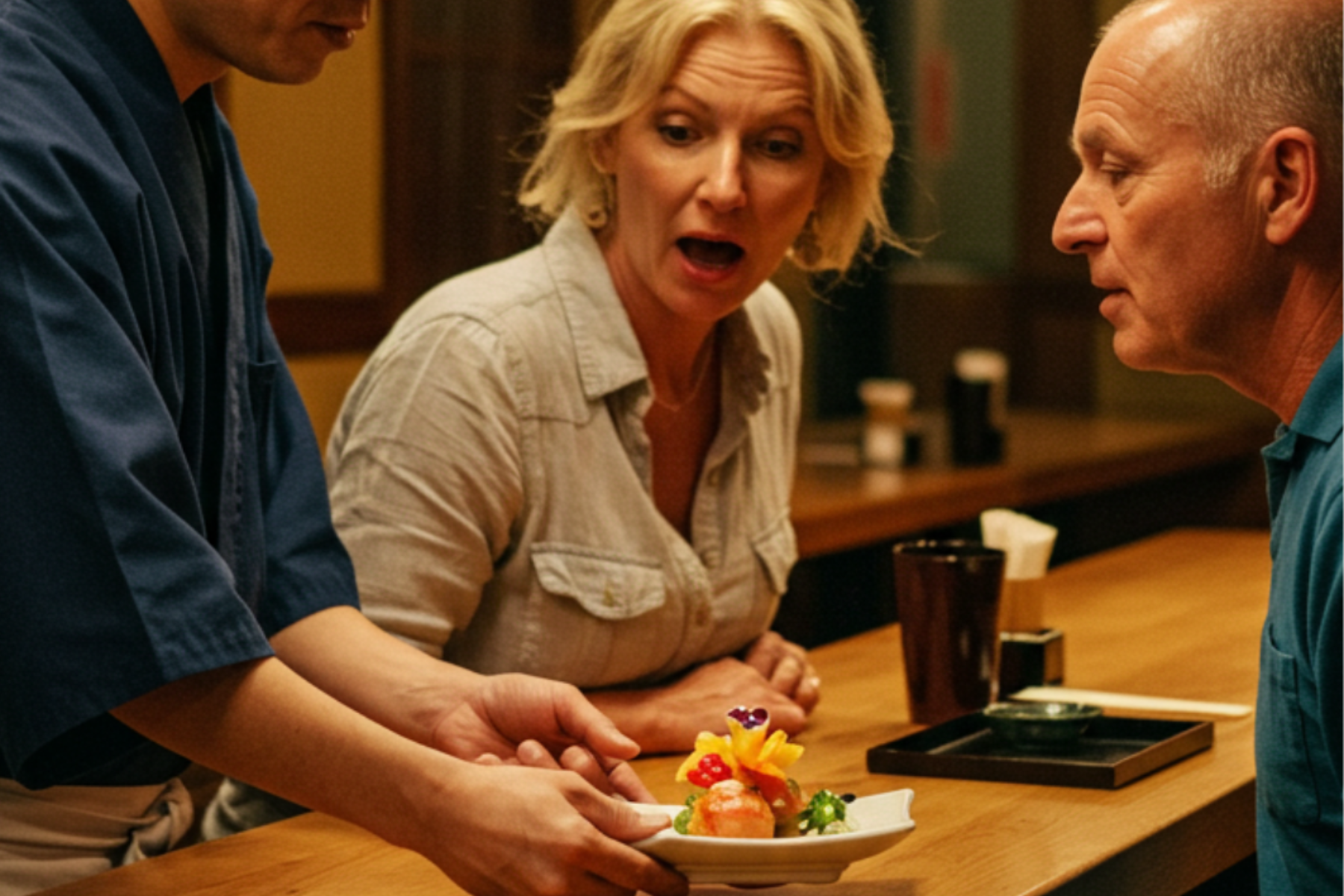If you’ve ever dined at a Japanese izakaya (casual bar-restaurant) or certain traditional restaurants, you might have noticed that your final bill is slightly higher than the prices of the dishes you ordered. Does this mean the restaurant is trying to scam you?
Absolutely not!
The extra charge usually comes from something called “Otoshi” (お通し)—a unique and customary part of the Japanese dining experience. But what exactly is Otoshi, and why do you have to pay for it?
Let’s explore the meaning, cost, and etiquette of Otoshi so you can fully enjoy your meals in Japan without any confusion.
What is Otoshi (お通し)?
Otoshi is a small appetizer that is automatically served to customers at many izakayas, traditional restaurants, and bars in Japan. Unlike a complimentary starter, Otoshi is not free—it acts as a table charge or seating fee that is added to your bill.
Why is Otoshi Served?
- Hospitality: It’s a way for the restaurant to welcome guests and offer something to enjoy while waiting for the main dishes.
- A Taste of the Chef’s Skills: Otoshi often features seasonal ingredients or house specialties, giving you a chance to try something new.
- A Substitute for a Cover Charge: Some restaurants do not charge a separate seating fee, instead including Otoshi as a small mandatory dish.
Think of it as a Japanese version of the bread and butter served at Western restaurants, except that you’re expected to pay for it.
How Much Does Otoshi Cost?
The price of Otoshi varies depending on the restaurant, but it typically ranges between ¥300 to ¥500 per person. In more upscale izakayas or fine dining establishments, the charge could be higher, depending on the quality of the dish served.
Can You Refuse Otoshi?
- Even if you decline the dish, the charge may still be added to your bill.
- Some restaurants may not allow you to refuse it, as it is part of their standard service.
- If you’re unsure, check the menu or ask the staff beforehand if there is an Otoshi charge (“Otoshi wa ari masu ka?” / お通しはありますか?).
What Kind of Dishes Are Served as Otoshi?
The type of Otoshi varies by restaurant and season. Since Otoshi is a small appetizer, it is usually light but flavorful. Here are some common examples:
Typical Otoshi Dishes
- Edamame (枝豆) – Steamed and lightly salted green soybeans, a classic starter.
- Tsukemono (漬物) – Japanese pickled vegetables with a tangy and refreshing taste.
- Hiyayakko (冷奴) – Chilled tofu topped with green onions and soy sauce.
- Sunomono (酢の物) – Vinegar-marinated seafood or vegetables for a refreshing bite.
- Simmered Vegetables (煮物) – Lightly braised seasonal vegetables with soy sauce-based flavors.
- Miso-Flavored Tofu – A soft and slightly sweet dish often served with seaweed or bonito flakes.
These dishes highlight the chef’s creativity and provide an authentic Japanese dining experience that you might not have ordered otherwise.
Where Can You Expect to Get Otoshi?
Otoshi is commonly served at specific types of restaurants, particularly those offering a more traditional or social dining atmosphere.
Places That Typically Serve Otoshi:
- Izakaya (居酒屋) – Japanese-style pubs, where Otoshi is standard.
- Traditional Japanese Restaurants (和食店) – Especially those specializing in kaiseki (multi-course meals) or Sushi restaurant.
- Bars and Small Local Restaurants – Many local eateries in Japan automatically serve Otoshi as part of their service.
Places That Usually Do NOT Serve Otoshi:
- Fast-food chains (McDonald’s, MOS Burger, etc.)
- Cafés and casual Western-style restaurants
- Conveyor belt sushi (回転寿司) chains like Sushiro(スシロー) or Kura Sushi(くら寿司)
If you’re dining at a modern, casual eatery, you likely won’t encounter Otoshi. However, if you step into a traditional izakaya or bar, expect this small but important dish to be included.
Is Otoshi a Scam?
Some foreign visitors mistakenly think that Otoshi is an unfair hidden fee because they were not explicitly informed about it before ordering.
However, in Japan, Otoshi is a well-accepted part of dining culture, much like how tipping is expected in other countries.
Why Otoshi is NOT a Scam:
- It is a cultural tradition and not an attempt to charge you unfairly.
- The price is generally reasonable (¥300-¥500) and provides a quality appetizer.
- It is clearly stated on many menus, often as a “table charge” or “otoshi fee.”
- It allows customers to enjoy a part of Japanese cuisine they might not have ordered otherwise.
If you are aware of Otoshi in advance, you won’t be surprised when you see it on your bill!
Tips for Tourists Dining in Japan
To avoid confusion and enjoy your meal without surprises, here are some useful tips:
- Check if the restaurant has an Otoshi charge before ordering.
- Be prepared to pay ¥300–¥500 per person as a table charge.
- Don’t be afraid to ask the staff if you’re unsure (“Otoshi wa ari masu ka?” / お通しはありますか?).
- Think of it as part of the cultural experience and enjoy the dish.
- If you strongly prefer not to pay an Otoshi fee, choose a different restaurant (fast-food or casual eateries won’t have it).
Enjoying Otoshi as Part of Japanese Dining Culture
Otoshi is more than just a small dish—it’s a warm welcome from the restaurant and an opportunity to taste something new.
Instead of seeing it as an unnecessary fee, think of it as a way to experience the chef’s creativity and seasonal ingredients.
- Otoshi is an automatic appetizer served in izakayas and some traditional restaurants.
- It acts as a table charge and usually costs ¥300–¥500 per person.
- You may not be able to refuse it, as it’s part of the restaurant’s service.
- It’s a great way to try a new dish you wouldn’t normally order!
So next time you dine at an izakaya, embrace the experience, enjoy the Otoshi, and appreciate this unique part of Japanese hospitality!

